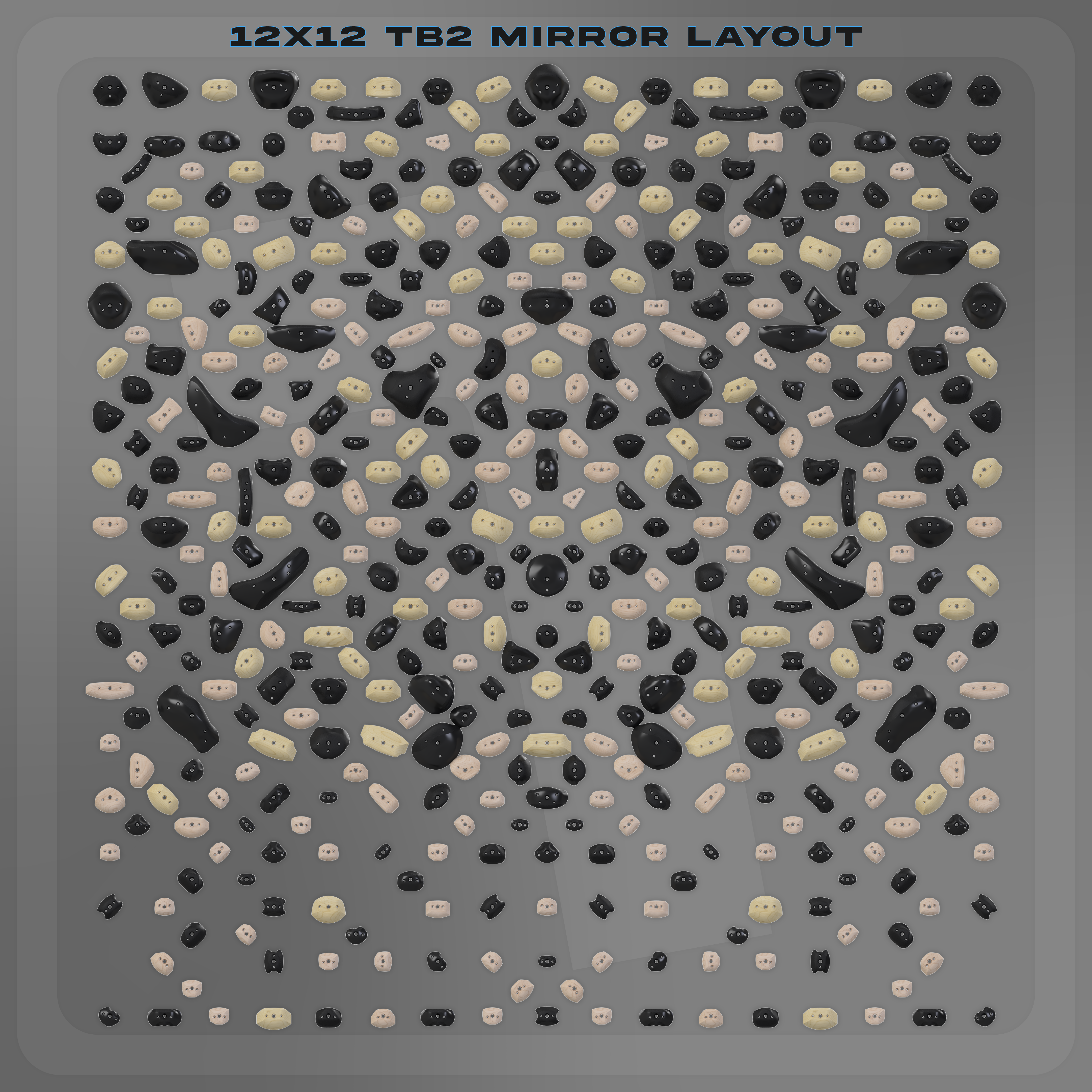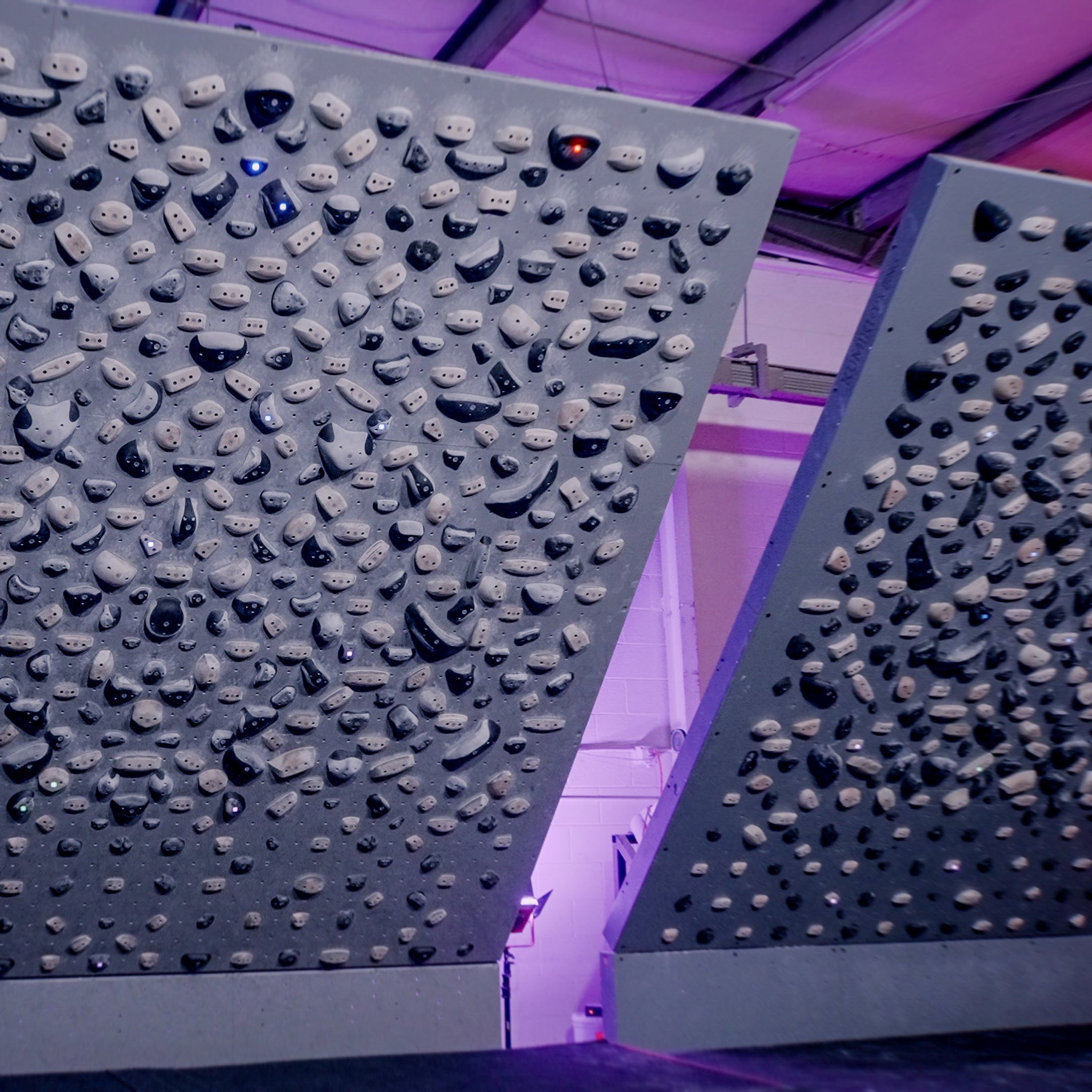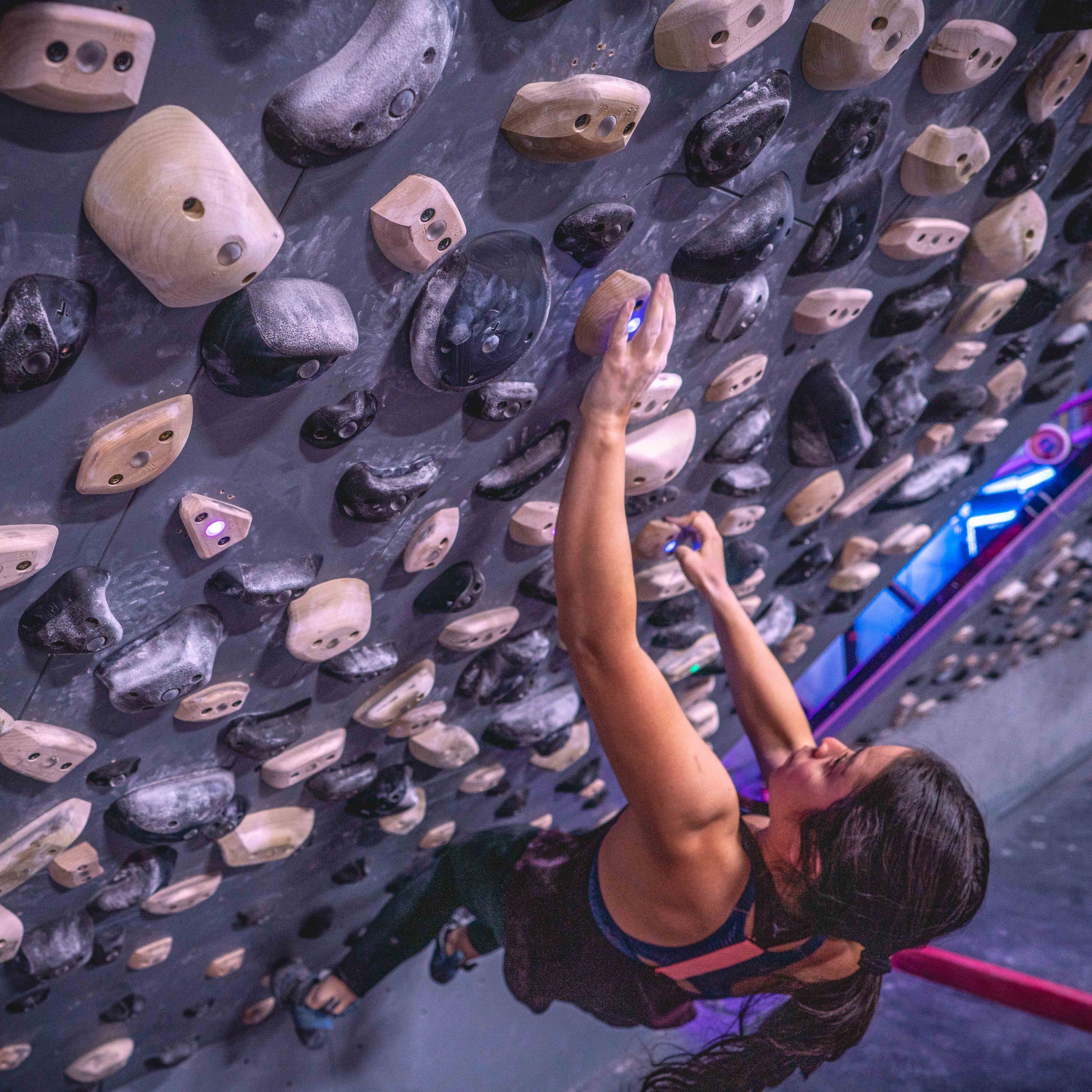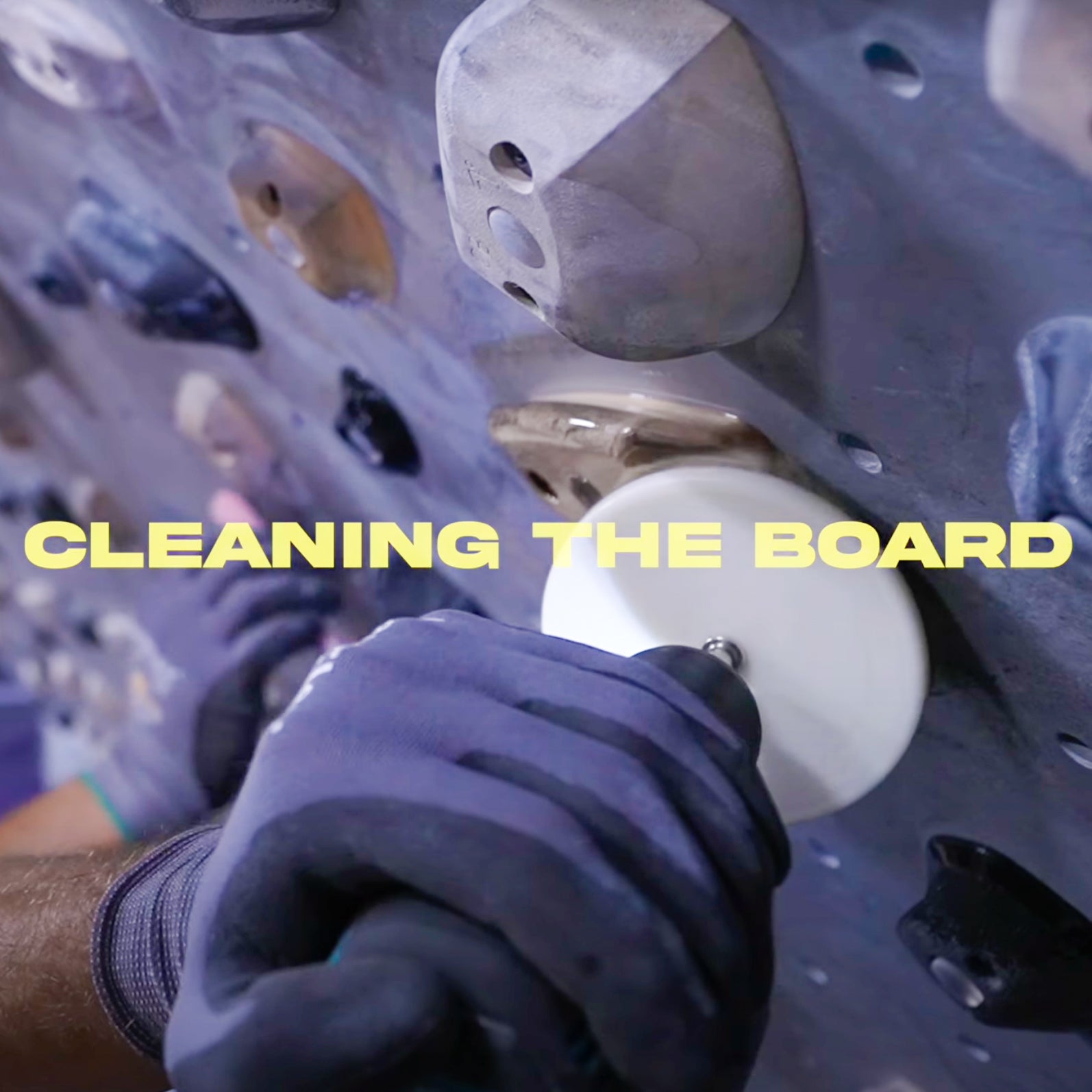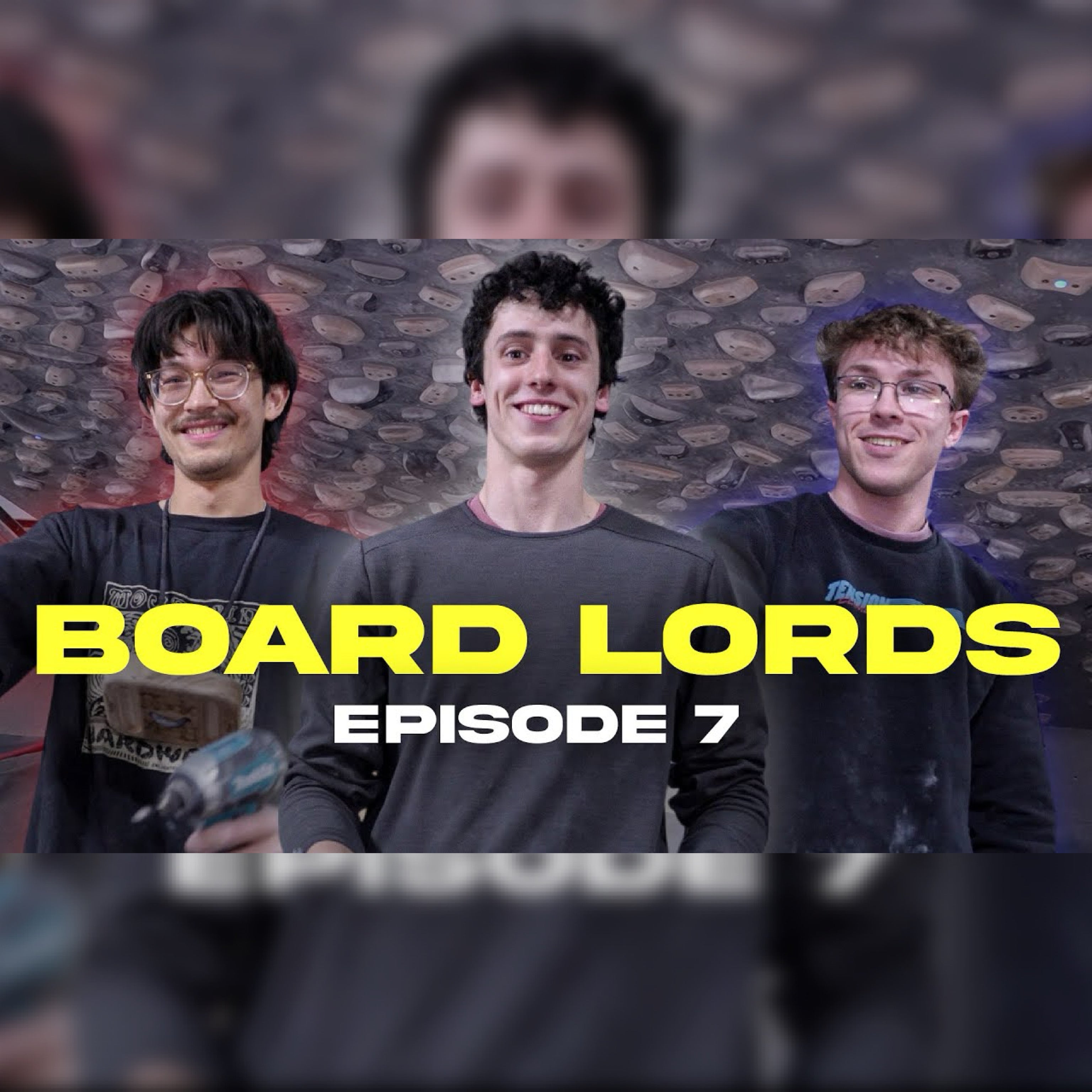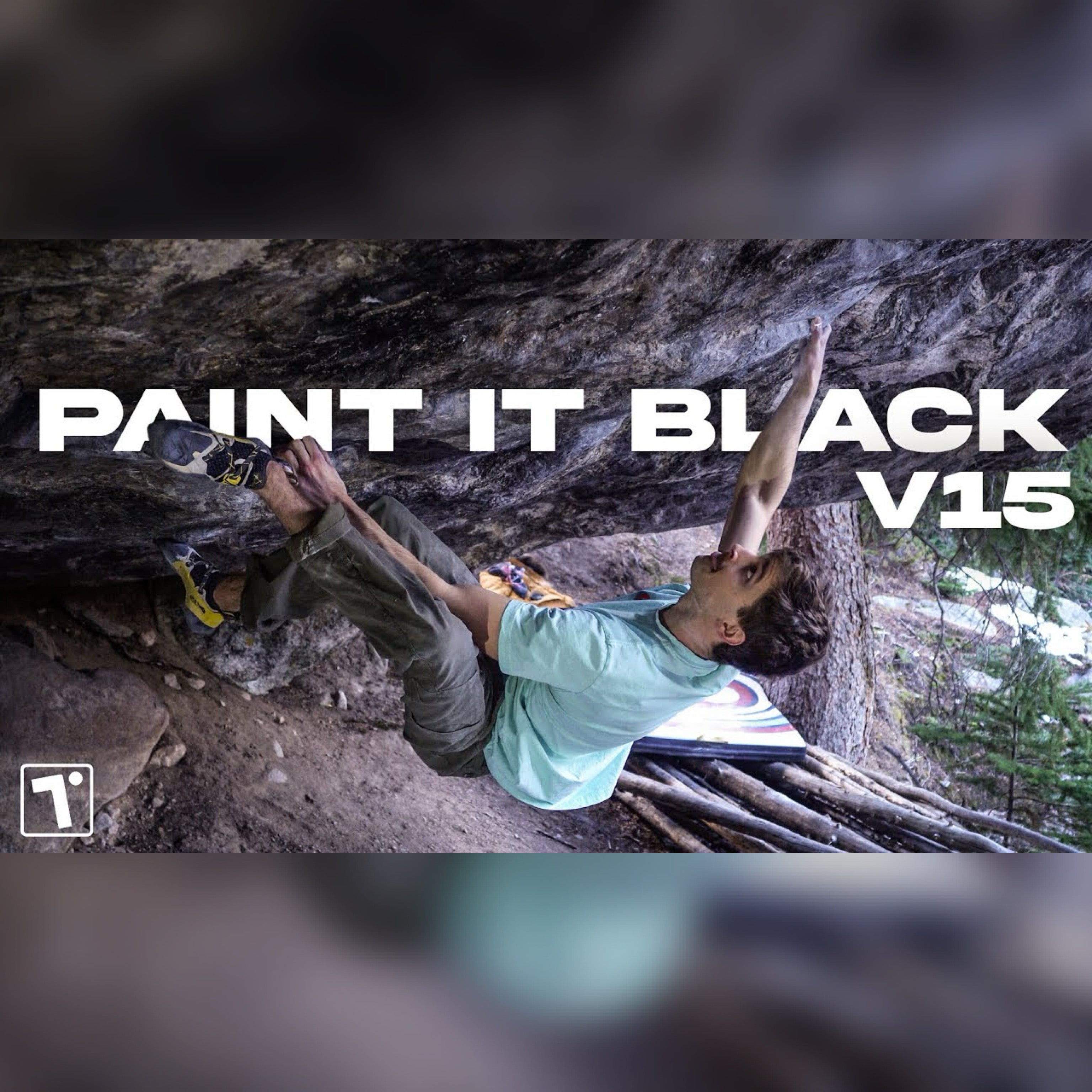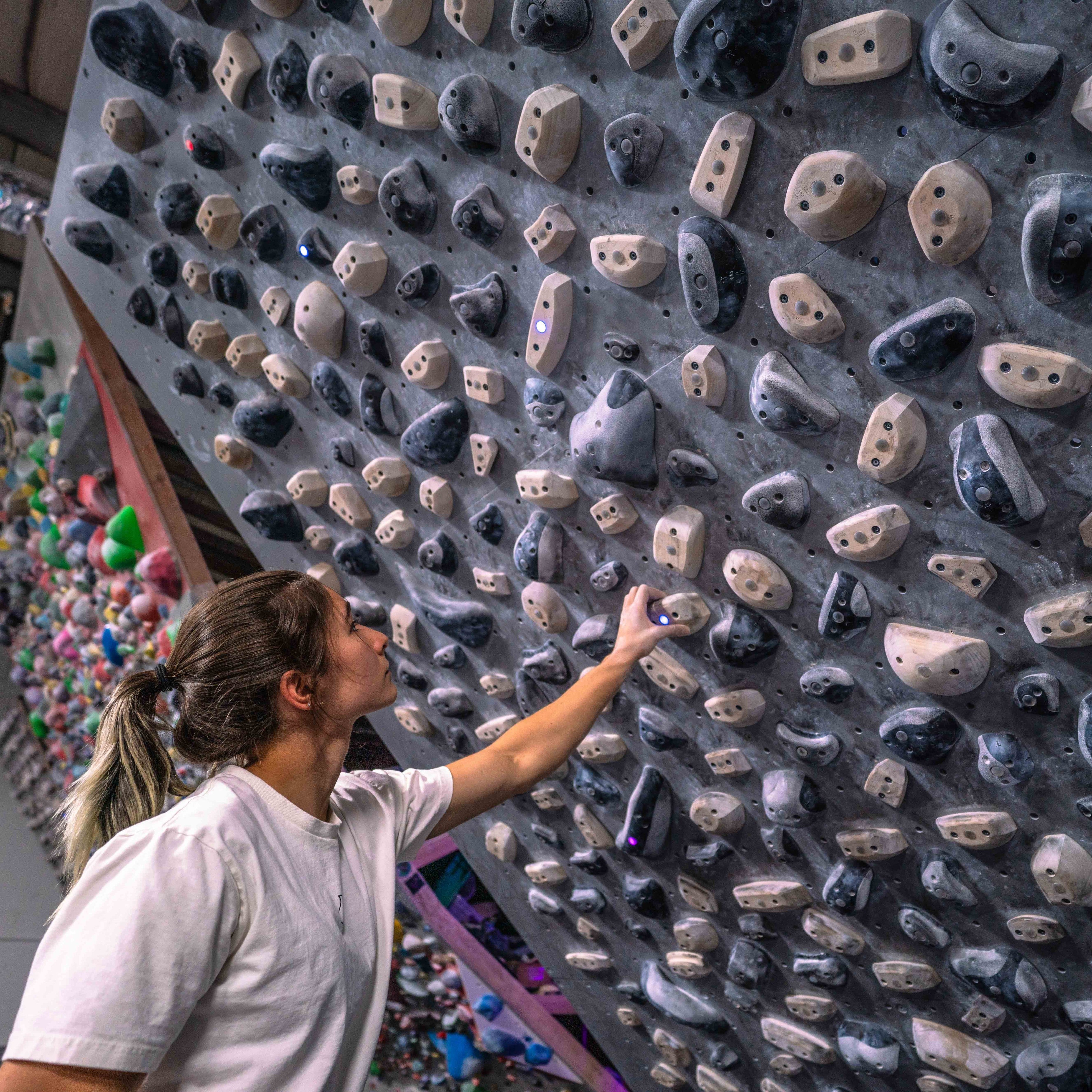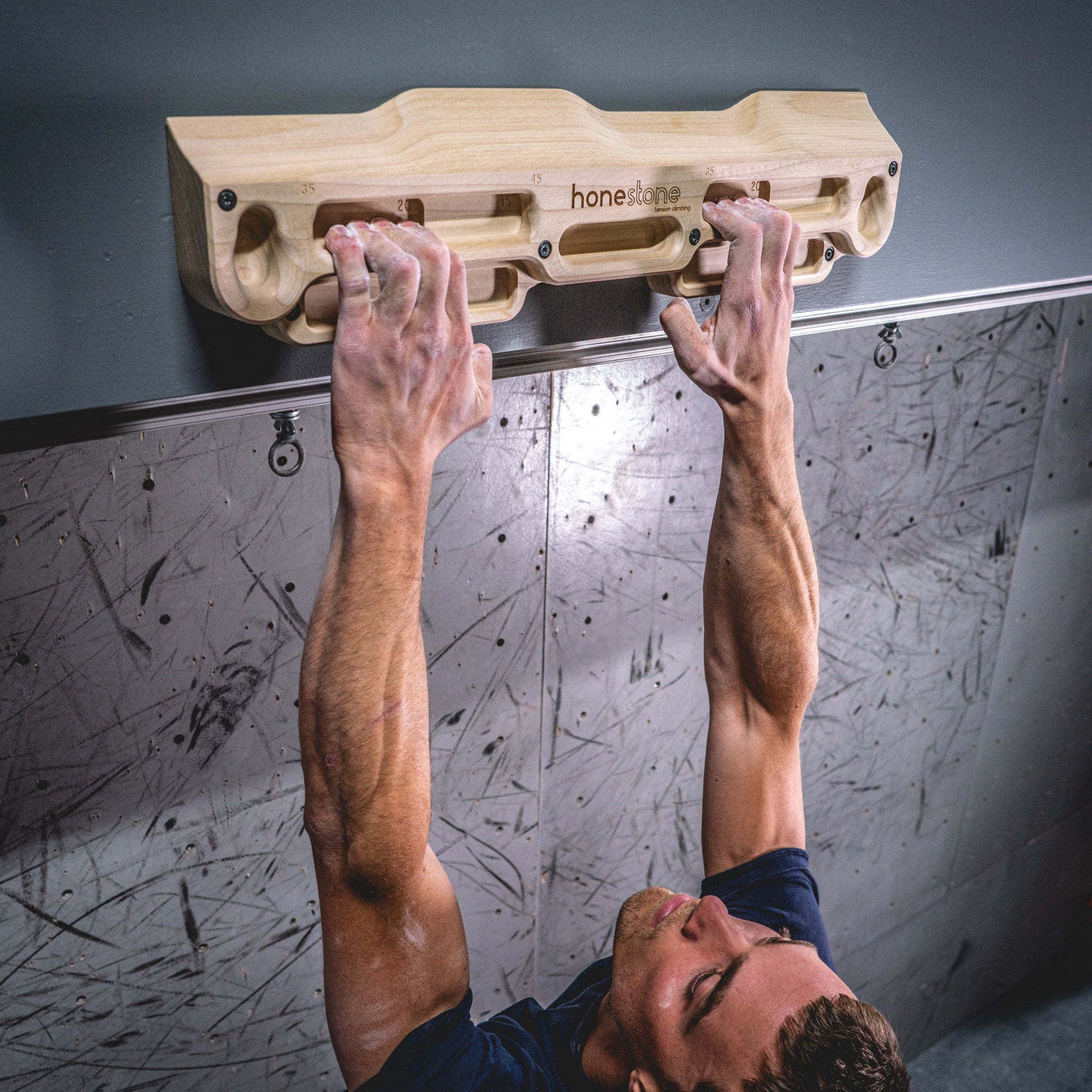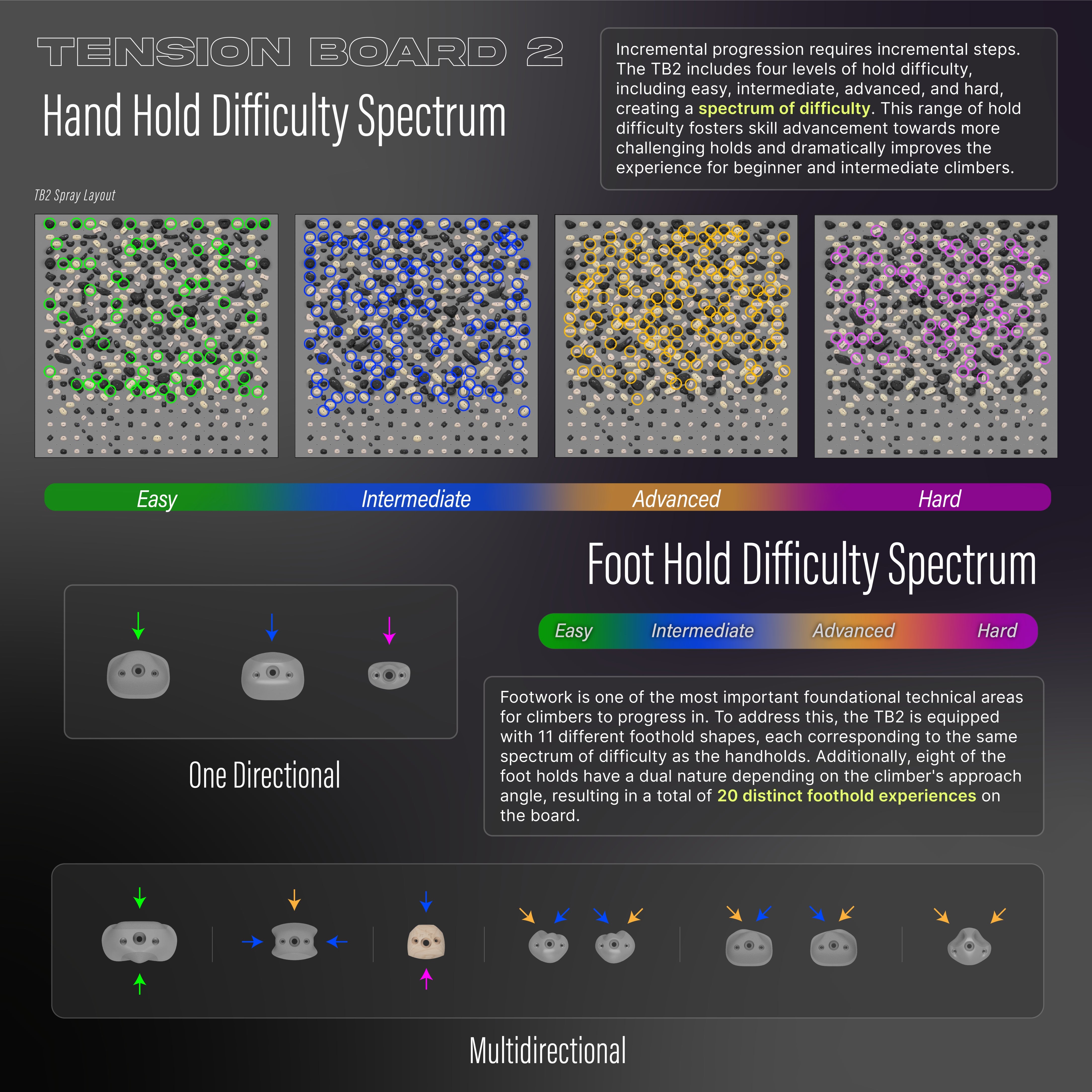WRITTEN BY NICHOLAS MILBURN
It is a wonderful feeling to sit on top of your project. It took me years to finally sit on top of mine. After years of travel, money, blood, and sweat, and now it is all over. I remember the first time I tried Dreamcatcher in 2013 on my first trip to Squamish. I think I only did three moves on the whole route. I could not even get through the last boulder by pulling on the draws. I went back to Squamish the next year to boulder but decided to hop on Dreamcatcher again just for fun. While we were playing on the route, Mike Foley and Ethan Pringle showed up with an entourage. People piled into the space at the base of the route to watch and film. I remember watching them both try the route and being completely mesmerized by how fluid they looked doing the moves. I could barely link two moves together on this route, and these guys were floating. They both fell on the final crux, and everybody left. Left alone in the woods, looking up at that gorgeous stone I knew I wanted to do this route. I did not know then how hard it would be and long it would take me to achieve that goal.

A few years later, in 2017, I made my first trip to Squamish with the intention of sending Dreamcatcher. We had about seven weeks until we had to return to Colorado for school, which I thought would be plenty of time. I was much stronger this go around, and things started to click. I slowly pieced the route together and started to make links. I remember one crazy try early in the trip. I had not figured out the slab yet and was tired of trying it, so I just pulled past it and tried to link the rest of the route. I barely knew my beta, and I had a bad beta on the pin scar section, but somehow I made it to the last boulder. I ended up falling on the crux match more because I was surprised than tired. That go got in my head a little bit because it made me think I was actually pretty close when truly I was not. It took me another couple of weeks to get to that point from the bottom. I went through three different betas for the pin scar section, but once I figured it out, I always made it to the final boulder. The final boulder of Dreamcatcher, a low percentage, campusy, desperate V10, is a special bit of climbing. At this point in my projecting timeline, I couldn’t even do the final boulder consistently, which did not bode well for send attempts. I spent about four weeks falling off the last four moves of the route. I got to the point where I felt completely fresh leading to the last boulder, but I would fall anyway. That trip ended with me getting my high point and going home. Actually, in a desperate attempt to send, I flew back to Squamish during a long weekend from school to try and send. I fell into the same place as always and went back to school.

A year later in 2018 I made my return trip to Squamish. I was incredibly psyched to return to Dreamcatcher after taking a year off. On the first day of the trip, I jumped straight on it. It was a very demoralizing attempt. The last thing I remembered about Dreamcatcher was almost sending, and now the route felt heinous again. It was an odd feeling because I knew the route was hard, but I had clung on to the feeling of almost sending for so long, and struggling on it again was both startling and depressing. After the second day of unenthusiastic effort, I decided to boulder and get my psych back up. I spent the next two weeks bouldering and had a really good time. I did a lot of boulders I wanted to try, but I was always thinking about Dreamcatcher. After those two weeks of bouldering, I got back on Dreamcatcher and felt much more hopeful. The bouldering did a lot for my strength, but I knew I did not have the fitness to send the route, so I drove down to Seattle to train for a few days. I met up with Tyson Schone, who was incredible, and he helped me train a bit, but the real value in his training was in the strategies he taught me. None of the information was revolutionary, but it really helped give me a little bit of an edge for the route.

I went back to Squamish feeling a lot better and started to properly siege the route. Keenan Takahashi and Jimmy Webb showed up, and we climbed together on the route. They both have a lot of psych, and it made piecing the route together really enjoyable. I was making quick progress, but I was running out of time. On my second to last day in Squamish, I had an incredible go, where I stuck the gaston just before the final jug but was too tired to make the bump. That go took a lot out of me, and I did not have the time to recover and give it another full-value effort. I tried it the next day, but I did not have it. I had to leave Squamish again feeling super fit, getting my high point, and not sending the route.
The thing that made me the most disappointed, though, was that I could have prepared more before I went to Squamish, but I stupidly thought I was just going to do it. I thought I would just pick up where I left off and send the route. That was definitely not the case.
I planned to go back to Squamish, but I was not going to repeat my mistake. This time I was going to train. For most of the year, I worked on my power in the southeast. Then about a month before the trip, I switched tactics and almost exclusively trained in the gym. I climbed a lot, focusing on power endurance. I was also working with Paul Corsaro, who made sure my body was healthy and strong. I was not actually sure how fit I was when I left Chattanooga because I had not tested my myself on anything but gym boulders, but I felt ready to tackle Dreamcatcher.

My first stop on my way to Squamish in 2019 was Boulder, CO. I was initially planning to climb outside, but the weather was bad, so I just trained in the gym for a week. It was actually pretty fortunate because I was more psyched to train than to try to send stuff in Colorado. I had some of the most heinous training days I have ever had in my life. Keenan Takahashi and Shawn Rabatou were super psyched, and we pushed each other really hard. The amount I climbed in that week was definitely not something I could maintain for very long, but for that short amount of time, it was perfect. I was feeling pretty confident that I had prepared appropriately.
The first day in Squamish was a huge confidence booster. The weather was the best I had ever seen in Squamish. The air was cold and it was windy. I flew up Dreamcatcher on my first try of the trip. The route felt familiar and the moves felt easier than in past years. I did not send it that day, but I was comfortable doing the moves. I knew it would take a little time to get to the proper fitness level, but I was really happy.

One thing I learned that made projecting Dreamcatcher more enjoyable was to try the route without the slab. I found the slab section particularly heinous, so I would pull past it and try to send the route from the start of the rail. Within a few days, I actually made the link without the slab. That same day I tried the route from the bottom and fell in the final moves of the crux. So in one day, I climbed from the bottom into the final crux and from just past the slab to the end. I was beyond excited about how much progress I had made.
At this point, Matty Hong flew in to come try the route with me. Matty is a much more experienced sport climber than me, and it was really helpful to learn some advanced sport climbing techniques from him. Basically, these techniques included climbing less and sitting around waiting for good conditions. I took a few days off to recover my skin and sat around underneath Dreamcatcher until the wind picked up. Typically I would show up, try the route twice, and leave, but with a route this hard, I really needed every advantage I could get.
Matty also helped me streamline my beta a little bit. For years I thought Chris Sharma’s iconic slab dyno was bad beta. I always joked that Chris probably just wanted to get off the slab as fast as possible, so rather than continue climbing the slab he just jumped off. Matty was talking about the dyno, so I decided to try it. It was a scary move to try, but it wasn’t actually very hard. I always thought the last few moves of the slab were the hardest part, and the dyno cut them out. However, the best part of the dyno was the boost it gave me. It was impossible not to have fun jumping to that perfect granite sloper, and it gave me a lot of momentum to keep climbing.

On the day I finally sent it, I warmed up on the middle section of Dreamcatcher and sat around until the wind got good. Matty jugged a static line to film and I started climbing. My skin was nice and hard which really helped with the slab. I climbed through the slopers quickly like always. I sat at the rest until I felt fresh and then moved through the pin scars. The rest position before the last boulder was always a little uncomfortable, but I felt good. The pinch felt good, and my foot stayed when I matched it. Going into the gaston felt desperate, but I knew I could do it even if it felt bad. I closed my left hand hard and bumped to the jug. I jumped hard to make sure I stuck it. I stuck it. I rested at the jug until I was relaxed for the final bit of climbing. It felt perfect. I pulled past the chains and climbed to the summit of the boulder. I untied and threw my rope down, feeling triumphant.
I remember watching Chris Sharma climb Dreamcatcher when I was a kid. I did not really know what I was watching, but I remember thinking it was crazy to climb sideways for so long. I remember thinking how impossibly hard and scary it looked. It is cool to have gotten to a point in my climbing where I can actually send a route like this. I have never worked harder to climb a piece of rock before, and it is possible I will never feel more excited to stand on a piece of rock ever again. I certainly hope nothing else ever takes this long, but I guess significant accomplishments take time.
The entire time I was working Dreamcatcher I knew I could climb it, I just needed to persist. It is important not to get discouraged by a perceived inability to do a climb. Even not being able to do all the moves is not a sign of a routes probability. Perhaps the route will not go that day, or even that year, but given time and persistence the route will likely go. A hard rock climb should feel hard. If it does not feel hard you are not climbing at your maximum. Have fun and remember to persist.

